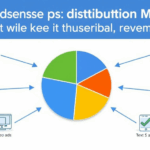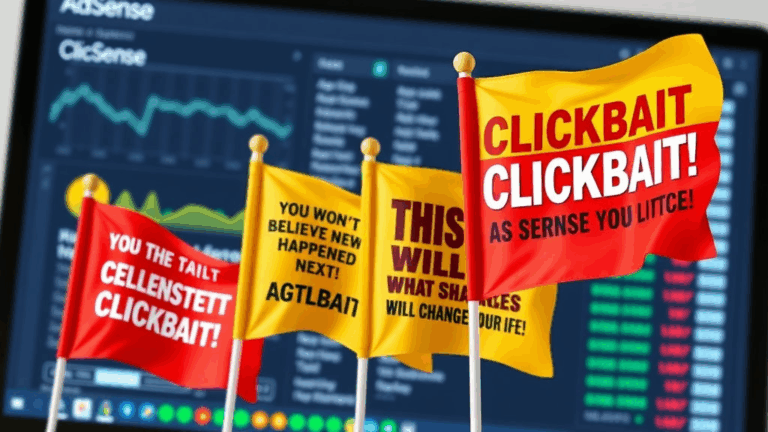Getting AdSense to Play Nice With Paid Membership Content
AdSense Will Index What It Wants — Even Behind a Paywall
Here’s the thing nobody tells you: If your membership content is technically visible to Googlebot, AdSense might try to serve ads there — even if your human users can’t see the content without logging in. I lost a few hours to this when I noticed that certain restricted pages were actually logging impressions in my AdSense reports. Turns out, I had the most well-meaning but ineffective robots.txt that’s ever existed.
One of the reasons this happens is that AdSense doesn’t really care whether content was premium or restricted — it just sees if the URL was crawled and cached. If your paywall loads via JavaScript after a few milliseconds (like a graceful fade-in membership modal), then AdSense’s crawler might catch the raw HTML. This is especially wild when you use full-page caching (via something like Cloudflare APO) and forget to exclude signed-in cookies.
My low-tech fix? Block the entire membership section with a server-side check before any markup renders, not in the front-end. And don’t rely on robots.txt alone. It’s polite, not binding. Google doesn’t even have to follow it. They usually do — until they don’t.
How AdSense Breaks When JavaScript Gating Gets In the Way
If you’re using front-end frameworks like Vue or React to hide membership content (think: client-side auth + API check), then welcome to funhouse AdSense behavior. You might see a warning about “low-value content” or get ad requests served on a blank container. This is because AdSense isn’t seeing the real deal — just the shell.
AdSense’s crawler doesn’t wait around for your hydration cycle to complete. If your DOM ships with a placeholder that says something like “Verifying access…” or “Loading member content”, and the real text only loads post-mount, then AdSense might assume your content isn’t there at all. You’ll get a page that seems eligible on the surface but no competitive bids come in because Google’s auction sees a ghost town.
Tip: If you’re powering gated sections via JS views, try server-side rendering the first kilobyte of meaningful non-gated markup. Even better, lazy-load AdSense after client auth triggers — don’t front-load it on every route.
Category Block Filters vs. User Intent on Premium Pages
This one’s subtle but costly. If your membership site delivers finance, dating, or health content (the usual high-CPC stuff), and you’ve blocked those sensitive categories in AdSense, then you’re kneecapping your own earnings without knowing it.
I learned this reaaaally late after I blocked the “sensationalism” and “weight loss” categories because I didn’t want clickbait junk on premium medical content — but it turns out AdSense uses those to serve the best-matching ads to the topic. Premium content means higher intent, and those sensitive ad verticals often win big in the auction. If you suppress entire categories site-wide, they’re excluded from members-only content too.
A weird behavioral bug: AdSense sometimes uses page-level category blocking even when you configure it for domain-wide. It happens less now, but I’ve seen it with single-entrypoint SPAs using dynamic route injection.
What finally tipped me off? My backfill network was outperforming AdSense — which shouldn’t happen unless you’ve severely crippled category matching.
Lazy Loading Ad Units on Logged-In States
Lots of devs (me included, once) slap an ins class="adsbygoogle" unit right into the logged-in templates and call it good. But if you’re using a membership platform that changes the DOM dynamically after login via Alpine, Turbolinks, Livewire, or whatever flavor-of-the-year JavaScript you’ve glued together, those ad units aren’t reinitializing properly.
I had a scenario where Turbo would swap in the content panel when a user logs in, and since the script wasn’t re-run, the ad tags stayed inert. Refreshing the page would show the ads, so I didn’t catch it until someone mentioned site speed improved “weirdly” after logging in. Yeah, because the ads 404’d silently.
Quick hack I used to fix it:
document.addEventListener('turbo:load', function() {
(adsbygoogle = window.adsbygoogle || []).push({});
});AdSense doesn’t provide great guidance for dynamic front-ends, but if you rely on reforming the DOM via JavaScript, push the ad logic post-load manually — just make sure you don’t overfire it.
Non-Standard Login Paths Can Trip Policy Violations
Had a site where a user could enter via example.com/login or example.com/user/login due to legacy redirects. That small detail triggered a weird AdSense policy warning: “encouraging accidental clicks on ads by placement.” I peeled back the logs and saw that on one of those paths, the login modal didn’t load properly and instead displayed a fallback page — which just so happened to include an ad unit right next to the defunct login form.
Apparently, AdSense flagged this as a UX trap (by their bot, not a person), and I had to explain the flow and remove the ad temporarily. After fixing the routing issue and turning off the fallback catch-all, policy alert disappeared a few days later. But it reminded me how easily duplicated paths or conditional DOMs can trigger reputation hits, especially on gated content where interactions aren’t consistent.
Membership Platforms That Don’t Respect Cookie Headers
This is the one that really chewed up my afternoon. Some third-party membership plugins (I’m looking at you, WP Membership Pro) don’t actually set HttpOnly or even secure flags on their session cookies. That means if you’re rendering quote-unquote “secure” content server-side based on session headers and then caching it, you risk full-content leakage to AdSense crawlers or even unauthenticated users if you forget to strip caching headers.
This isn’t plainly stated anywhere. The documentation says it “honors auth tokens,” but in practice, I found it skipped the auth check mid-render because the plugin assumed AJAX calls would manage the output visibility. Not if you pre-render and let Cloudflare cache the HTML.
The fix? Force cache busting on any URLs containing session access keys. Here’s a tiny snippet I now use in Cloudflare Workers:
if (request.cookies.includes('member_session')) {
return fetch(request, { cf: { cacheEverything: false } });
}You’d think membership plugins would do this out of the box. Most don’t.
Your Users May Still See Ads Meant for Logged-Out Visitors
It took me longer than I care to admit to learn that AdSense’s ad personalization doesn’t differentiate logged-in vs. logged-out unless you explicitly define that context. That means a paid subscriber who’s logged in might still see ads optimized for low-quality traffic or churn campaigns because the system never got told they were a logged-in/paying user.
This shows up most strongly with in-page anchors and auto ads. If you don’t segment your ad groups based on user state, then your highest paying users get hit with bottom-tier CPMs — and may also be more likely to bounce because of irrelevant placements.
- Set explicit userType variables in Google Tag Manager (like “subscriber” vs “guest”)
- Use
data-ad-clientvariants via split templates - A/B test auto ad coverage separately for logged-in sessions
- Enable granular location-based ad filtering by template context
- Block interstitials or sticky ads from membership portal sections
- Track ad engagement on member pages as its own funnel in GA4
It’s easy to assume personalization is magic. Spoiler: it’s not. You have to babysit it.
Backfill Networks Are Bidding Against Gated Pageviews Blindly
Realized this when I swapped out AdSense with an alternate SSP for a 20% traffic segment (via UTM flags only added post-login). What I found: the backfill partner was showing totally mismatched campaigns — one page had banner ads for gambling software next to research-backed dietary studies. It looked spammy as hell.
This happens because backfill networks are guessing intent based on URL and meta data scraped at time of bid — but they usually don’t get crawled versions of your restricted content. Their optimization layer is blind unless you set custom key-values at runtime.
You can patch this somewhat by piping data like user role, membership tier, article category, etc. into your ad loader via query params or global JS vars that the bidder recognizes. Some DSPs let you pass prebid contextual data this way. Most don’t advertise it unless you ask.
I only caught it because one user sent me a screenshot saying, “Why is there a poker ad on my nutrition dashboard?” Hard to unsee.













